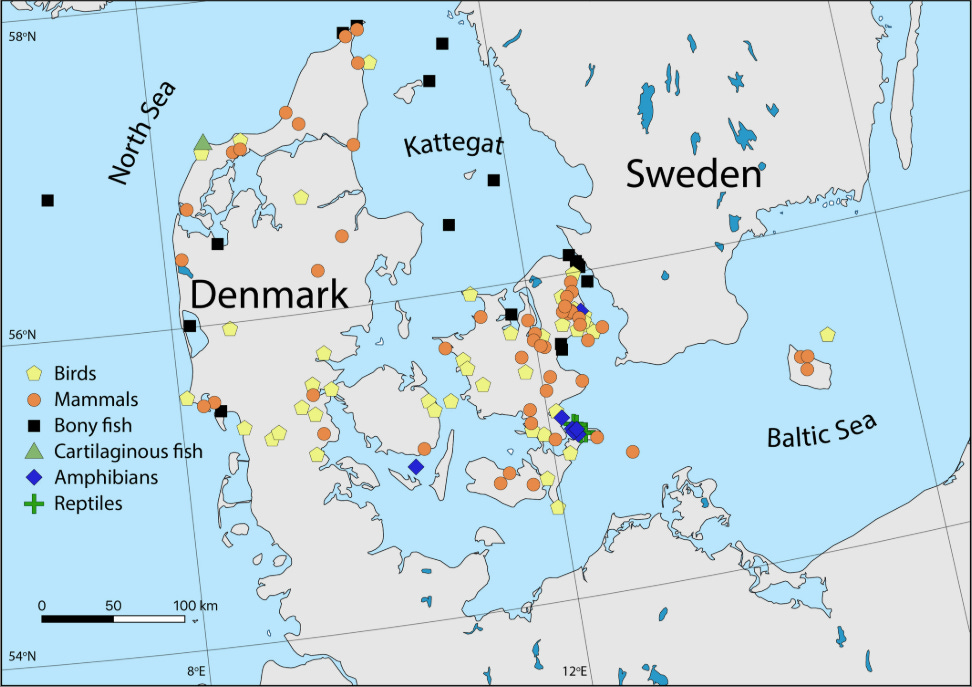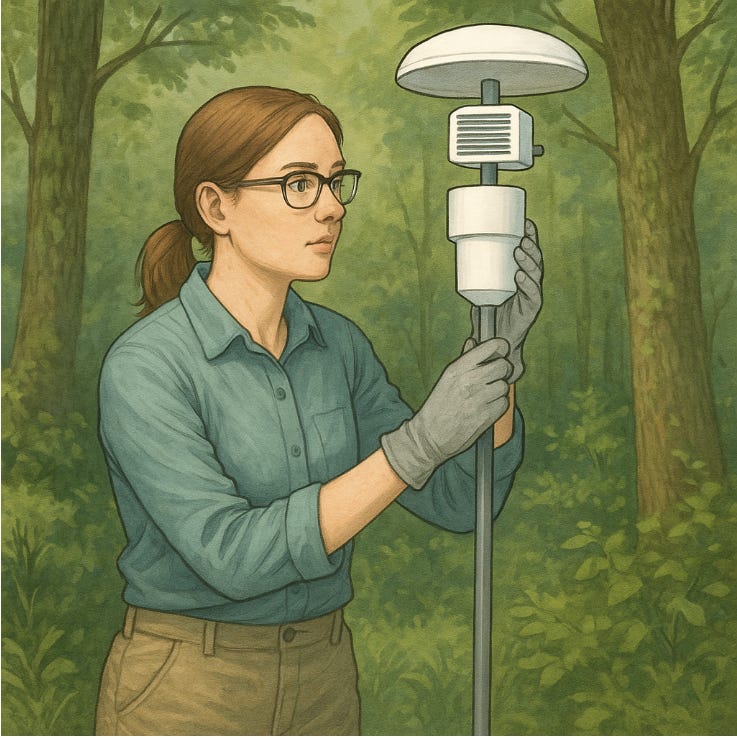A New Way to Track Every Living Thing—No Cameras, No Traps, Just Air
Airborne DNA is transforming how we protect wildlife, understand ecosystems, and define personal privacy.
The wind carries more than weather—it carries the whispers of life.
It begins with a whisper you can’t hear—the genetic echoes of life drifting invisibly in every breath of wind. Now, scientists are learning to listen.
Armed with nothing more than filters, fans, and sequencers, researchers are capturing genetic traces from the air and identifying the plants, animals, fungi, and microbes that live all around us—often without ever being seen. This is the revolutionary promise of airborne environmental DNA, or eDNA: a scientific breakthrough that allows us to read the wild without disturbing it.
And with the world’s wildlife populations plummeting by more than two-thirds since 1970, this breakthrough could not come at a more critical moment.
What Is Airborne eDNA?
All organisms—whether bear or bacterium—shed bits of DNA into their environment. Traditionally, eDNA studies relied on soil and water samples. But today, researchers are sampling the air itself. Using small fan-powered filters placed in forests, caves, and cities, they capture floating biological particles: spores, pollen, skin cells, fur, and more.
Back in the lab, this genetic material is sequenced and compared against vast databases, providing a remarkably detailed inventory of life present in the area—without ever needing a camera trap or physical encounter.
Field-Proven: Bats, Biodiversity, and New Discoveries
In a groundbreaking study published by Nature Communications in 2023, researchers installed air samplers in 12 tropical bat roosts in Belize. They detected bat DNA in 9 of them—including the white-winged vampire bat (Diaemus youngi), which had never been physically documented at that location.
This wasn’t just scientific novelty—it was a conservation breakthrough. No nets. No disruptions. Just air, filtered and decoded.
Meanwhile, scientists in Sweden combed through 34 years of archived air filters and found traces of over 2,700 genera, documenting long-term changes linked to habitat loss and climate trends.
And just this month, a Danish team conducted the first-ever national airborne eDNA survey. By repurposing existing air-quality monitoring stations across 300 sites, they detected over 1,100 taxa, from mammals and birds to fungi and protists.

Why It Matters for Animal Advocates
Airborne eDNA isn’t just a clever trick—it could change how we protect animals:
Non-invasive monitoring for rare, elusive, or stressed species without disturbing them or their habitats
Early detection of invasive species or wildlife diseases, allowing for rapid response
Long-term ecological insight from archived filters, revealing decades of ecosystem changes and biodiversity trends
Cost-effective surveys over large or remote areas
For those of us advocating for animals and ecosystems, it’s hard to overstate the significance. This is the first tool in decades that can scale without cruelty, capture, or costly intervention.
The Ethical Airspace: A Wake-Up Call
But there’s a catch.
Airborne eDNA can also detect human DNA—even enough to reveal ancestry. A study in Dublin showed how ambient air in public spaces carried measurable amounts of human genetic material.
That opens some uncomfortable questions:
Who owns the DNA floating in shared air?
Can these tools be used for surveillance or policing?
Should people be notified when their DNA is captured unintentionally?
We’ve seen where unregulated surveillance leads. The same technology that protects wildlife could be turned against communities—particularly marginalized ones.

A Role for the Animal Welfare Movement
Animal advocates know better than anyone how easily “data-driven” strategies can be misused. We’ve seen shelters fudge metrics, agencies misrepresent outcomes, and “no-kill” claims conceal suffering.
Now is the time to step up and help guide this technology:
Demand ethical guidelines for eDNA sampling
Push for transparency in how and where it's used
Insist on animal and human privacy protections
Promote archiving and access for public-interest science
Contact your state legislators, environmental agencies, and national organizations like the U.S. Fish and Wildlife Service or the Environmental Protection Agency. Urge them to adopt clear, enforceable standards before this powerful tool outpaces regulation.
This is a rare moment when animal protection and environmental policy can move in tandem—and your voice can help ensure both are respected.
The Bigger Picture
This innovation arrives as the natural world teeters on a precipice. A 2022 WWF report estimates that global wildlife populations have declined by 69% since 1970. Entire ecosystems are collapsing before they can even be fully documented.
Meanwhile, programs like the Ocean Census are discovering hundreds of new species in unexplored marine habitats—reminding us just how much we still don’t know.
Airborne eDNA could bridge that gap—capturing what’s left of our vanishing biodiversity, in time to save it.
Conclusion: The Wind Remembers
There is something deeply poetic about this technology.
For the first time, the air itself has become a witness—a record of life, loss, and survival. The wild is speaking, not with roars or songs, but with fragments. With whispers. With breath.
As Percy Bysshe Shelley wrote,
“O wild West Wind, thou breath of Autumn’s being,
Thou, from whose unseen presence the leaves dead
Are driven, like ghosts from an enchanter fleeing…”
Now, the wind carries not just leaves, but the very DNA of life—remnants and memories, scattered across the world. The air becomes both destroyer and preserver, holding stories of what has been and what may yet come.
Whether we choose to listen, and act, is up to us.
Ed Boks is a former Executive Director of the New York City, City of Los Angeles, and Maricopa County Animal Care & Control Departments, and a former Board Director of the National Animal Control Association. His work has been published in the LA Times, New York Times, Newsweek, Real Clear Policy, Sentient Media, and now on Animal Politics with Ed Boks.
Stay Informed
For more analysis and updates on the evolving landscape of animal welfare policy, visit Animal Politics with Ed Boks.






Fascinating stuff! And, due to the likelihood of misuse, terrifying.
Claims such as that "a 2022 WWF report estimates that global wildlife populations have declined by 69% since 1970. Entire ecosystems are collapsing before they can even be fully documented" need to be taken with extreme skepticism, because the input data tends to categorically exclude any wildlife species deemed to be non-native; because the definition of "eco-system" tends to overlook that almost all habitat is constantly in evolutionary flux (even a so-called "climax forest" is usually less than 500 years old); and because "collapsing" actually just means "transition" from supporting one suite of species to better supporting another.
Even if the definition of "wildlife" is narrowed to include only vertebrate species, anywhere from 10% to half of all wildlife in most of the world are "non-native" when "native" is defined as "whatever was there when first scientifically catalogued."
Conversely, when the species counts of the 19th and early 20th centuries are compared to the species counts of today, including "non-native" species, every inhabited continent has had a marked net gain in resident species, according to International Union for the Conservation of Nature data. Moreover, the pace of species discovery, even among vertebrates, far outstrips species losses. If insects are included, the ratio of discoveries to losses becomes more than 1,000-to-one.
Among the likely benefits of airborne DNA analysis will be rediscovery of many now cryptic species, believed to be extinct when in truth they are merely "vanishing" by learning how better to conceal themselves in human habitat.
The species we are truthfully in possible danger of losing are mostly the largest of the large, with the biggest habitat needs and most likely to come into conflict with humans. Except for some of these species, primarily found in Africa at the present time, nature is doing quite well at maintaining & expanding bio-diversity.
Also worth remembering is that 100 years ago the U.S. was much closer to losing grizzlies, wolves, bison, et al, than Africa is now to losing elephants, hippos, gorillas, and lions, but as our affluence and level of education rose, we saved them. The same trend is clear in Africa, where the more educated and affluent nations are making strides toward saving their species at risk, often with little or no useful help from the trophy hunters and traffickers of the developed world.